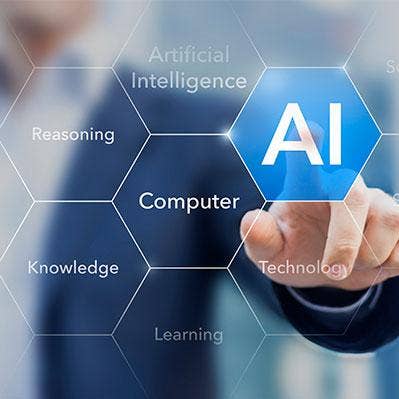Peter Ungaro: HPE-Cray Portfolio Will Bring HPC, AI To Enterprises
'It's just an incredibly comprehensive portfolio and something I know can't be matched by anyone else in the industry today,' Cray CEO Peter Ungaro says of HPE and Cray's combined portfolio of high-performance computing and artificial intelligence solutions.

Hewlett Packard Enterprise believes new digital transformation workloads will require exascale technologies that are best served by HPE and Cray's combined portfolio of high-performance computing and artificial intelligence solutions.
That's according to Peter Ungaro, CEO and president of Cray, the Seattle-based HPC vendor that was acquired by HPE in September. At the Supercomputing 2019 conference in Denver on Monday, Ungaro revealed HPE and Cray's "comprehensive HPC and AI" portfolio that will target beyond the research universities and government agencies that have traditionally benefitted from such capabilities.
[Related: HPE-Cray Deal Will Drive HPC Sales Through GreenLake, Partners Say]
"It's just an incredibly comprehensive portfolio and something I know can't be matched by anyone else in the industry today," he said in a briefing with journalists and analysts.
Ungaro, a veteran in the supercomputing space, said the computer industry has entered the exascale era, referring to the coming wave of supercomputers that will be capable of performing 1 or more exaflops, or one quintillion floating-point computations per second.
"Our vision for the exascale era is to build systems that perform like a supercomputer but run like a cloud: bring together these two worlds which used to be opposite sides of the spectrum from one another, but bring that all together into a single system, he said.
The portfolio encompasses everything from services and software to compute, interconnect and storage technologies that are meant to serve the growing needs of enterprises. This includes Cray's new ClusterStor E1000 storage system, HPE's Apollo server line, Cray's Slingshot interconnect and HPE's Data Management Framework software and Cray's container-based Shasta system management software.
"It's really about the start of an entirely new era of computing, where exascale technologies will be needed to run new digital transformation workloads," Ungaro said.
A critical part of the combined portfolio is HPE GreenLake, which the company will use to provide HPC and AI solutions in a pay-per-use consumption model.
"One of the things that I'm most excited about is that we can start to begin to consume these as-a-service, whether you're doing it on premise or the hybrid way," Ungaro said.
As part of the portfolio, HPE is expanding its Apollo server lineup to include Cray's supercomputers, which are based on Cray's Shasta architecture. HPE said this will give customers a "new level of choice for a range of workloads," from a single server to the largest supercomputers.
Ungaro said Cray is uniquely equipped to serve HPE customers' exascale computing needs since HPE and Cray have been selected to build and service the world's first three exascale supercomputers, which includes the Frontier supercomputer at Oak Ridge National Laboratory and the Aurora supercomputer at the Argonne National Laboratory, both for the U.S. Department of Energy and set for a 2021 completion.
Most recently, Cray announced last week that it has partnered with Japanese tech company Fujitsu to build the first-ever commercial supercomputer that will be powered by Fujitsu's A64X Arm-based processor that will serve the Los Alamos National Laboratory and other institutions.
Bill Mannel, HPE's vice president and general manager for HPC and AI, said while governments and universities have represented the lion's share of supercomputers in the world, there's a lot of room in the commercial space for adoption to accelerate.
"Some people might think that exascale is only for large systems in the DOE or research systems," Mannel said in the press call with Ungaro. "However, I talked to a lot of commercial customers across energy, manufacturing and life sciences industries, and they're dealing with the same tremendous amounts of data coming in, whether it's from the edge, whether it's from new ways to do analytics — and the only way that they can find value in that is actually to use some of the very same methods that we're developing for some of these exascale machines."
Mike Thompson, CEO of Groupware Technology, No. 87 on the 2019 CRN Solution Provider 500 list, said he sees the Cray deal as another example of the stepped-up pace of breakthrough innovation from HPE under CEO Antonio Neri.
"The innovation engine has been turned back on under Antonio," said Thompson. "We are really starting to see a lot more innovation come out of HPE under his leadership and guidance… We are reenergized with the partnership based on the innovative solutions that HPE is bringing to the marketplace."